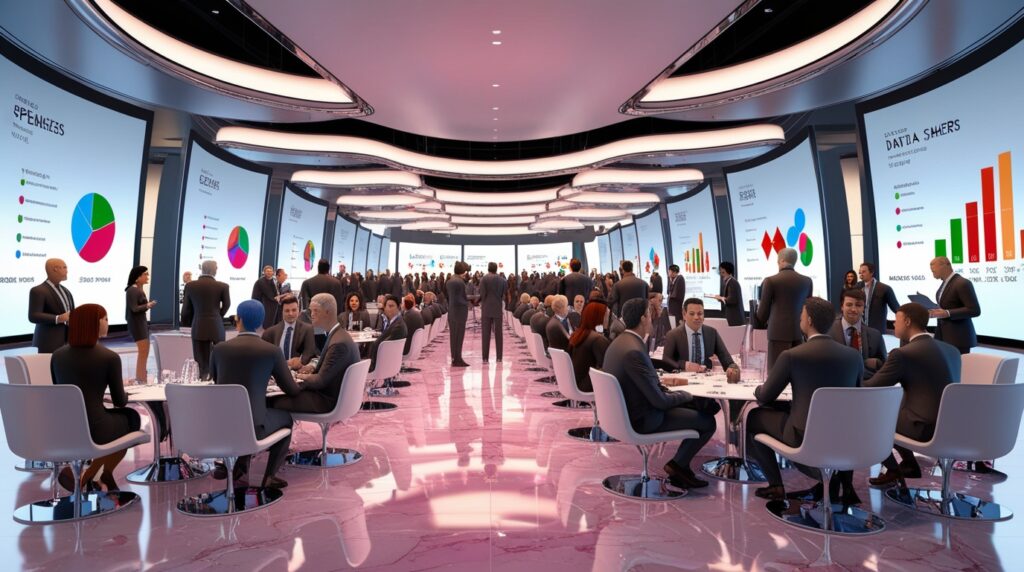In today’s business landscape, the conference room is more than just a space with chairs and a table—it’s a productivity hub. Did you know that 71% of professionals believe effective meetings are the key to business success? That all begins with the right meeting environment. Whether you’re running a tech startup, law firm, or creative agency, optimizing your conference room setup is essential.
This guide explores the essentials of a modern conference room, including smart design, cutting-edge technology, hybrid solutions, and expert tips for maximizing team collaboration.
Why Conference Rooms Still Matter in a Digital World
Despite the rise of remote work, conference rooms remain crucial for:
- Strategic decision-making
- In-person collaboration
- Video conferencing for hybrid teams
- Hosting clients and board meetings
Many organizations are investing in high-performance meeting room technology to ensure seamless communication across departments and time zones.
Essential Features of an Effective Conference Room
To ensure your conference room serves its purpose, consider integrating the following:
1. Ergonomic and Adaptable Furniture
- Adjustable chairs for comfort
- Modular tables for layout flexibility
- Whiteboards or writable walls for visual brainstorming
2. Audio-Visual Equipment
- High-definition video conferencing systems
- Smart TVs or projectors
- Wireless presentation tools
3. Room Booking and Scheduling Systems
- Integrate with Google Calendar or Outlook
- Touchscreen outside the room showing availability
- Mobile access to book on the go
4. Acoustic and Lighting Design
- Acoustic panels to reduce noise
- Natural lighting or adjustable LED lights
- Curtains or smart blinds to control ambiance
Conference Room Design Trends to Watch
The evolution of office design includes changes to how conference rooms are constructed and utilized. Some top trends include:
Huddle Spaces
Smaller, informal spaces designed for 2–4 people. These are perfect for agile meetings and quick discussions.
Biophilic Design
Adding plants, natural wood, and large windows to create a calming atmosphere that boosts creativity.
Smart Rooms
Rooms equipped with motion sensors, AI-powered assistants, and environmental controls that adjust lighting and temperature automatically.
Conference Room Technology for Hybrid Work Environments
Modern workplaces demand hybrid meeting solutions that ensure remote and in-person teams are equally engaged. Here are top technologies transforming the conference room:
- 360-degree conference cameras for full room coverage
- Noise-canceling microphones for clearer audio
- AI transcription tools to capture meeting notes in real time
- Digital whiteboards like Microsoft Surface Hub or Google Jamboard
Conference Room Best Practices for Maximum Productivity
Here’s how to make every meeting count:
1. Standardize Setup
Use the same tools and software across all meeting rooms for consistency.
2. Test Technology Beforehand
Don’t lose valuable time troubleshooting during meetings. Assign someone to perform regular tech checks.
3. Set an Agenda and Roles
Define a clear agenda. Assign a facilitator, timekeeper, and note-taker to keep discussions on track.
4. Limit Attendees
Avoid “meeting overload” by only inviting essential participants.
5. Record and Share Notes
Use tools like Otter.ai or Zoom transcription to summarize key points and next steps.
Cost Considerations and ROI
Investing in a well-equipped conference room may seem expensive, but it delivers measurable ROI:
- Fewer canceled meetings due to tech issues
- Improved client impressions
- Higher employee engagement and retention
- Faster decision-making
According to a Frost & Sullivan study, organizations with upgraded meeting spaces saw a 30% increase in productivity during collaborative sessions.
How to Choose the Right Conference Room Setup for Your Needs
Use the table below as a quick reference when designing your conference space:
| Team Size | Room Type | Must-Have Features |
|---|---|---|
| 2–4 | Huddle Room | Small display, webcam, whiteboard |
| 5–10 | Standard Room | Projector, audio system, conference phone |
| 11–20 | Boardroom | Large display, speaker tracking camera, mics |
| 20+ | Training Room | Multiple screens, classroom layout, Wi-Fi extenders |
Ready to Host Better Meetings?
Your conference room should be a strategic asset—not a source of frustration. By combining ergonomic design, smart technology, and clear meeting protocols, you can turn any space into a productivity powerhouse.
Want to promote your business event or meeting? Submit your event to Conferences Daily now.
FAQs About Conference Rooms
1. What is a conference room used for?
A conference room is a designated space within an organization where meetings, training sessions, presentations, and brainstorming activities are conducted.
2. How do I choose the right conference room size?
Base it on the number of attendees. Small rooms are suitable for quick team huddles, while large boardrooms are better for executive meetings.
3. What equipment should every conference room have?
A good setup includes a large display screen, video conferencing camera, high-quality speakers/microphones, Wi-Fi access, and a whiteboard or smartboard.
4. Can conference rooms support hybrid meetings?
Yes! With tools like Zoom Rooms, Microsoft Teams Rooms, and 360-degree cameras, hybrid meetings are seamless and inclusive.
5. How can I make my conference room more eco-friendly?
Use LED lighting, automated blinds, energy-efficient HVAC systems, and incorporate sustainable materials in furniture and decor.















